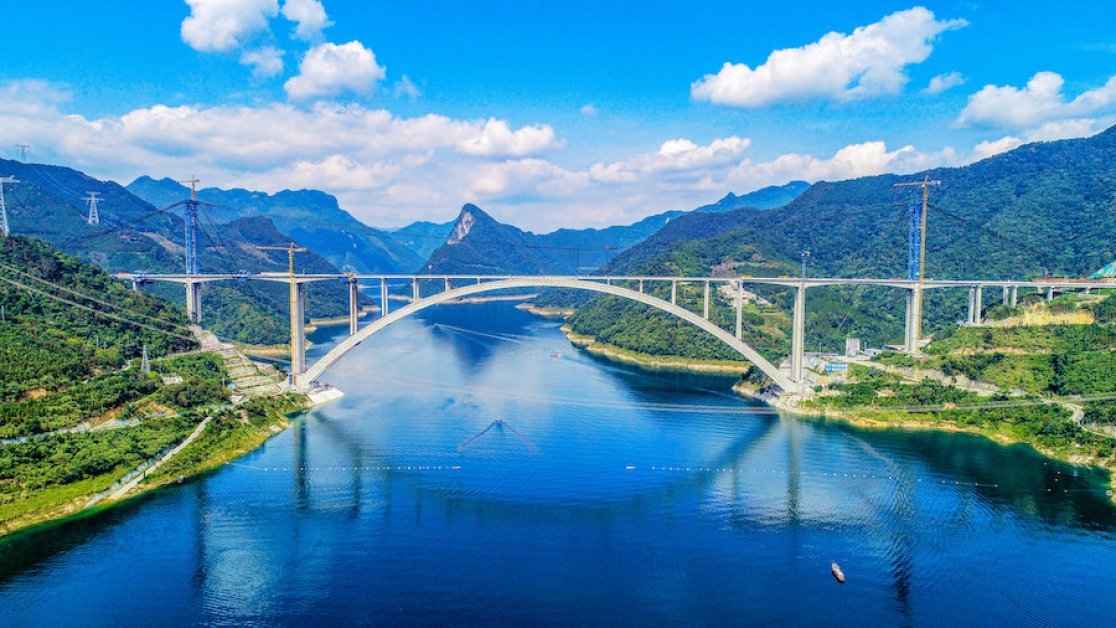The completion of the world’s longest steel-reinforced concrete arch bridge in China marks a significant achievement in engineering and infrastructure development. This remarkable structure, known as the Tian’e Longtan Bridge, showcases the ingenuity and skill of the construction crews involved in its creation. Let’s explore the intricate details of this architectural marvel and understand its importance in the realm of civil engineering.
Breaking Records with Tian’e Longtan Bridge
The Tian’e Longtan Bridge, boasting a 600-meter main span, has surpassed the Third PingNan Bridge by 25 meters, making it the longest of its kind in the world. Construction of this approximately 2,500-meter-long bridge began in 2020 as part of the Nandan-to-Tian’e Highway project in Guangxi, China. The bridge spans a reservoir over the Hongshuihe River, which is up to 900 meters wide and around 130 meters deep, with the bridge deck rising 140 meters above the reservoir.
Innovative Design and Construction
The unique arch design of the Tian’e Longtan Bridge, supported by 13 horizontal struts, accommodates four lanes of traffic. The cantilever construction method, using suspension cables without traditional formwork support, revolutionized the construction process. This technique, pioneered by bridge designer Jielian Zheng, allowed for the efficient completion of the arch rib without the need for extensive temporary structures. As a result, China has seen over 300 arch bridges constructed using this innovative approach.
Technological Advancements
Advancements in construction technologies, such as vacuum-assisted graded pumping, non-shrinkage concrete, and instantaneous stress load regulation of arch rings, played a crucial role in achieving the impressive 600-meter span of the Tian’e Longtan Bridge. The bridge’s steel framework, consisting of 44 segments totaling 8,200 tons, required meticulous planning and execution. The utilization of an abandoned soil disposal site as a steel fabrication plant streamlined the production process, with segments being hoisted onto large ships for assembly.
Overcoming Challenges
Access to the construction site posed challenges, with remote rural paths on both banks of the river complicating transportation logistics. Upgrades to existing roads and the construction of docks on each bank facilitated the movement of materials and equipment to the site. Despite these obstacles, the dedication and expertise of the construction crews ensured the successful completion of this monumental project.
Looking Towards the Future
As technology continues to evolve, the potential for even longer arch span lengths remains a focus for researchers and engineers. Ongoing efforts to enhance the fatigue resistance of welded joints, improve connections between structural components, and develop rapid construction methods aim to push the boundaries of bridge design. With the feasibility of concrete-filled steel tube arch bridges with spans of up to 700 meters already demonstrated, the prospect of constructing arch bridges with spans exceeding 700 meters is within reach.
the Tian’e Longtan Bridge stands as a testament to the innovation and expertise of the engineering teams involved, setting new standards for bridge construction and pushing the boundaries of what is achievable in civil engineering.


